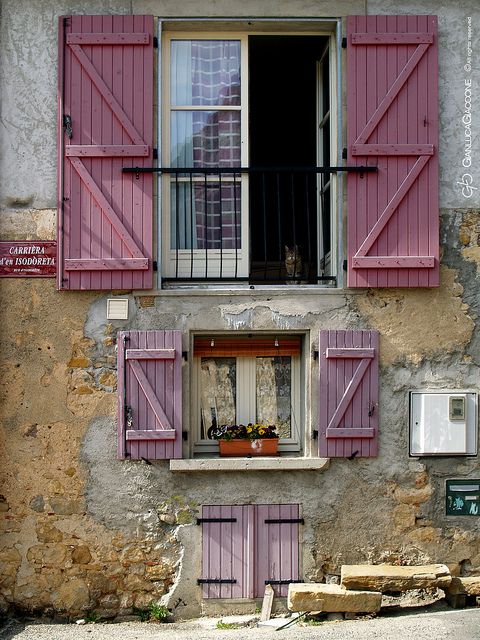#5718. Provincial French Facade: Stone and Burgundy Shutters
The facade of this rustic house showcases a charming example of Southern European architecture, likely from a French or Italian province. The unplastered stone walls with weathered finishes create an authentic historical character, reflecting the building's age and local construction traditions.
The most expressive elements of the facade are the pinkish-burgundy wooden shutters, crafted in a rural style with diagonal reinforcing boards. Their color contrasts with the weathered stone masonry, creating a visual accent characteristic of Mediterranean architecture. The upper window is designed as a French balcony with simple metal railings.
On the lower floor, there is a small window with a flower pot, which is a typical element of Southern European architecture, adding a homely touch to the building. Below that, a pair of smaller shutters in the same shade can be seen, possibly covering a basement or utility space. Next to the facade, there are unprocessed stone blocks, emphasizing the organic connection between the structure and the local landscape and building materials.
The textured surface of the wall with wear marks and traces of time gives the building a special character and testifies to its age, creating what in architectural criticism is often called a "patina of time" — natural aging that is valued in historical buildings.
